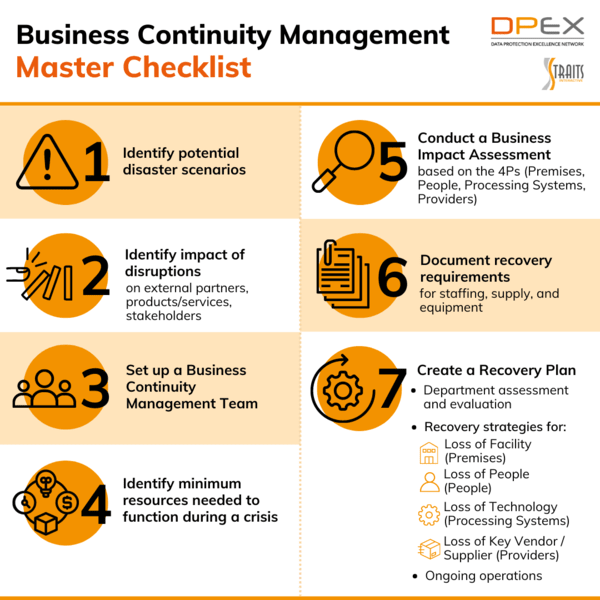Regardless of the size of the organisation, unforeseen incidents can have massive implications. From the loss of revenue to damaged brand reputation, the consequences can be potentially catastrophic, especially if the business is unprepared. Business continuity management (BCM) is an essential component of any business that must continue its operations in the face of a disaster. At its core, BCM is about creating and maintaining a plan that allows the business to continue business processes even if some or all its resources are lost for an extended period of time. To avert disaster and ensure business survival, it is critical to understand the full scope of risks at every level in the organisation.
What exactly is Business Continuity Management (BCM)?
Business continuity management is a process that identifies potential threats to an organisation, their impact on business operations and creating plans to mitigate these risks. These threats might cause a negative impact on the interests of its key stakeholders, reputation, brand, and value-creating activities. Business Continuity Planning provides a framework for building organisational resilience and effective response that safeguards an organisation's interests. It integrates the disciplines of emergency response, crisis management and disaster recovery to ensure business continuity.
Data Protection Laws and Business Continuity
With the implementation of data protection laws such as the European Union’s GDPR and Singapore’s PDPA, it may be required for organisations to report data breaches depending on the jurisdiction that it operates in. Also, the fines for breaches will depend in part on the effectiveness of the company's response to the breaches.
Thus, it is vital for the business continuity plan to be in sync with the organisation's breach response plan since the breach will inevitably have an impact on operations. For Data Protection Officers (DPOs), disaster preparedness and incident response are vital responsibilities.
What does a Business Continuity Plan Typically Include?
The main aspects and good practices of a continuity plan include:
- Identification and analysis of potential threats - The first step in developing a plan is to identify potential threats and develop a suitable strategy to mitigate them. For instance, even if the damage in a power outage seems minimal, companies must take the downtime into account.
- Management’s commitment – It is vital for the organisation’s management to be committed to managing business continuity and appoint appropriate personnel with the designated power and create the business continuity plan and policy.
- BCM team – It is necessary for roles and responsibilities to be established in the BCM team so that people are aware of what they need to do, in the event of a disaster.
- Plans to address and mitigate the risks – The organisation should determine and provide the resources needed for the establishment, implementation, maintenance, and continual improvement of the BCMS. When planning, it is also essential to factor effective crisis communication to internal employees as well.
- Business Impact Analysis (BIA) – The BIA predicts the consequences of disruption of a business function and process and gathers information needed to develop recovery strategies. It also quantifies the impacts of disruptions on service delivery, risks to service delivery, recovery time objectives (RTOs) and recovery point objectives (RPOs). These recovery requirements are then used to develop strategies, solutions, and plans.
- Recovery procedures – At this stage, the organisation should identify and select business continuity strategies and solutions that help to mitigate the risks identified earlier. The organisation should implement and maintain a response structure that will enable timely warning and communication to relevant interested parties and provide plans and procedures to manage the organisation during a disruption. At this stage, it is also imperative to test the plan to judge its effectiveness. Some examples of testing include tabletop and call tree exercises.
- Evaluation and Improvement – After the plan has been developed, it is vital for the organisation to evaluate it through internal audits, management reviews, and so forth. After identifying gaps and areas that need more support, it is necessary to improve the plan accordingly.
With the rapidly changing world that we live in, business continuity management is an integral part of any organisation that wants to survive through periods of change or disruption. Perhaps this is also why more countries are passing laws and regulations requiring business continuity compliance, and private businesses are increasingly requiring their suppliers and partners to implement business continuity solutions.
Learn more about business continuity management frameworks and methodologies to support business continuity compliance and build organisation resilience in the face of a disaster through our course here.
Article By: Aman Khajanchi & Steffi Tay
The views and opinions expressed in this article are those of the author and do not necessarily reflect the official view or position of DPEX Network.

